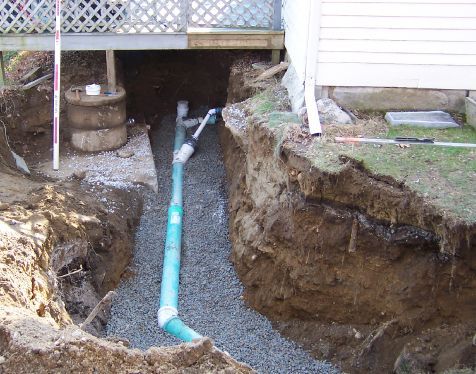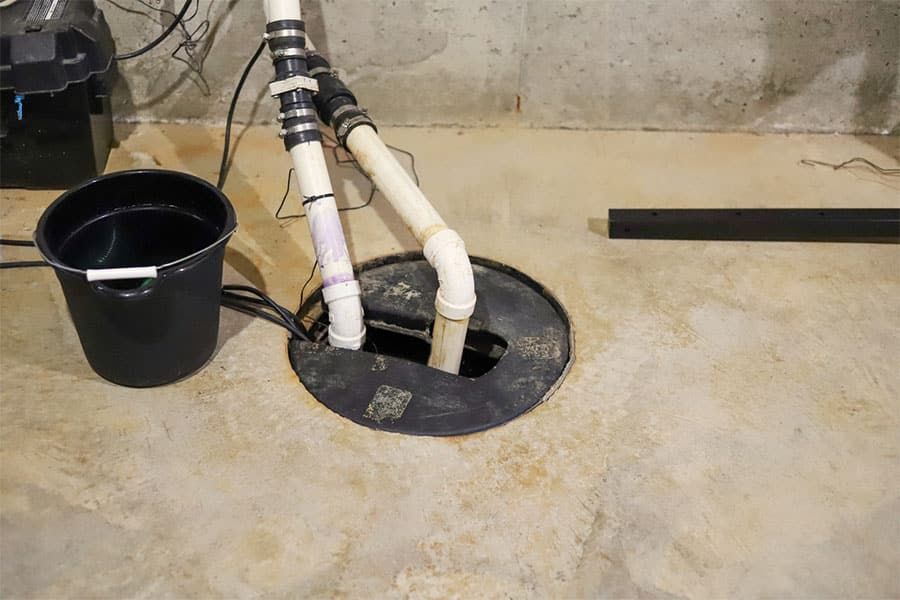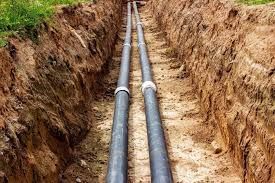The Role of Root Intrusion in Sewer Line Damage
Root intrusion is one of the most common causes of sewer line damage, especially in older plumbing systems. Trees and other vegetation have a natural tendency to seek out sources of water, and unfortunately, sewer lines often provide the perfect access point. Over time, tree roots can infiltrate and damage pipes, leading to blockages, leaks, and even total pipe collapse. Understanding how root intrusion occurs and the effects it can have on your sewer line is essential for homeowners looking to maintain the integrity of their plumbing systems.
"Why You Should Consider Trenchless Sewer Line Replacement"
What is Root Intrusion and How Does It Happen?
Root intrusion occurs when the roots of nearby trees or plants grow into underground pipes. Sewer pipes, particularly older ones made of clay or cast iron, are more vulnerable to root infiltration. These pipes often develop small cracks or joints where moisture seeps out, attracting roots in search of water. Once the roots find an entry point, they begin to grow inside the pipe, slowly enlarging the crack and blocking the flow of waste. Over time, these roots can create significant damage, leading to costly repairs and potential sewer backups.
The Impact of Root Intrusion on Sewer Line Functionality
Root intrusion can cause several major problems within a sewer line, each contributing to the deterioration of your plumbing system. Initially, roots may only cause minor blockages, slowing water flow through the pipes. However, as roots continue to grow, they can create severe clogs, reducing the capacity of the sewer system to function properly. This can result in waste water backing up into your home or yard, creating significant health and environmental hazards. Additionally, over time, the pressure exerted by the growing roots can cause the pipes to crack, break, or even collapse entirely, leading to costly repairs.
Signs That Tree Roots Are Infiltrating Your Sewer Line
Detecting root intrusion early can save you from expensive repairs and the disruption of a sewer line failure. Common signs that tree roots are infiltrating your sewer line include slow drains, frequent clogs, gurgling noises from toilets or drains, and foul odors coming from your plumbing. If you experience multiple plumbing issues at once, it could indicate that roots are causing significant damage within your pipes. Early detection is crucial to prevent the problem from escalating into a major issue.
1. Slow Drains Across Multiple Fixtures
If you notice that water is draining slowly in multiple fixtures, such as your sink, bathtub, or shower, it could be a sign that tree roots are infiltrating your sewer line. Roots can obstruct the pipes, reducing water flow and causing drainage issues in multiple parts of your home. If this problem is happening in several places simultaneously, it's likely an indication of a root-related blockage in the main sewer line.
2. Gurgling Noises from Drains or Toilets
Gurgling sounds coming from your drains or toilet can signal that tree roots are causing a partial blockage in the sewer line. As waste struggles to flow through the pipe due to the roots, air pockets get trapped and create these gurgling noises. If you notice gurgling when using your toilet or other plumbing fixtures, it’s time to have your sewer line inspected for potential root intrusion.
3. Foul Sewer Odors in the Home or Yard
One of the most telling signs of tree root intrusion is foul, sewer-like odors in your home or yard. Tree roots can cause cracks or leaks in sewer pipes, allowing sewage gases to escape and fill your living spaces with unpleasant smells. If you notice these odors near drains inside or around your yard, especially after a heavy rainfall or during the warmer months, it's a strong indication of root infiltration.
4. Frequent Clogs and Backups
If you experience frequent clogs, especially in your toilet or drains, tree roots might be the cause. Roots can block sewer lines and create significant buildup, leading to backups in your plumbing system. A single clog could be a simple problem, but repeated or persistent blockages suggest something more serious, such as roots obstructing the sewer pipe.
5. Visible Wet Spots or Standing Water in the Yard
If there are soggy or unusually lush areas of grass in your yard, particularly over your sewer line, it could be due to tree roots causing leaks in the pipe. Root infiltration can break or crack sewer pipes, causing sewage to leak out into the surrounding soil. This can create wet patches in your yard, which may eventually result in standing water or an area of grass that appears greener and more nourished than other areas.
6. Foundation Shifting or Cracks
Although less obvious, tree root intrusion can lead to shifts in your home’s foundation, especially if the roots are causing significant damage to the sewer line beneath the property. Leaking sewage can saturate the surrounding soil, weakening the foundation and leading to cracks or settling. If you notice cracks in your walls or floor, or if your foundation appears to be shifting, it’s worth considering that tree roots might be the cause.
7. Increased Water Bills
A sudden rise in your water bill without a change in usage patterns could be linked to tree roots invading your sewer line. When roots break or clog the sewer pipe, wastewater may not flow properly, resulting in water backing up into your system. This can cause your plumbing system to work harder, leading to increased water usage and, consequently, higher bills. If you notice an unexplained spike in your water bill, it's time to have your pipes checked for root intrusion.
How Root Intrusion Affects Different Types of Sewer Pipes
The impact of root intrusion can vary depending on the material of the sewer pipe. Older pipes, such as those made from clay or cast iron, are more prone to cracking and damage, making them particularly susceptible to root infiltration. These types of pipes often have joints that are more prone to leaks, which roots use as entry points. On the other hand, modern PVC pipes are much more resistant to root intrusion due to their smooth surface and strong joints. However, no system is entirely immune, and roots can still cause issues if they find weak spots.
The Process of Tree Root Removal and Repairing Damaged Sewer Lines
When tree roots invade a sewer line, removing them and repairing the damage can be a complex and time-consuming task. Plumbers typically use specialized equipment, such as rooter machines or hydro-jetting systems, to cut and remove the roots from the pipes. If the roots have caused significant damage, the affected portion of the pipe may need to be replaced entirely. In some cases, trenchless repair methods can be used to replace or repair the pipes without having to dig up your yard, minimizing disruption to your property.
Preventing Root Intrusion in Sewer Lines
Preventing root intrusion involves a combination of proactive measures and regular maintenance. One of the most effective methods is to keep trees and shrubs planted far away from your sewer lines. If your trees are already close to your sewer system, you may need to take steps such as installing root barriers or regularly trimming the roots. Additionally, scheduling regular inspections of your sewer line can help detect early signs of root intrusion, allowing you to address the problem before it becomes more severe.
The Costs of Root Intrusion and Repairing Sewer Line Damage
The costs associated with root intrusion can vary greatly depending on the extent of the damage and the required repairs. Minor root blockages may only require a simple root removal, which is relatively inexpensive. However, if roots have caused significant damage to your sewer line, replacing sections of the pipe or opting for more advanced repair techniques can be costly. In some cases, sewer line repair or replacement can cost thousands of dollars, making it essential to address root intrusion problems early to avoid these expensive repairs.
Conclusion:
Root intrusion is a common and often overlooked issue that can cause serious damage to your sewer lines. By understanding how roots infiltrate your pipes, recognizing the signs of intrusion, and taking preventive measures, you can protect your plumbing system from the costly damage that root growth can cause. Regular inspections, proper tree management, and prompt action when issues arise are key to maintaining a healthy and efficient sewer line. If you suspect root intrusion in your sewer line, it’s important to contact a professional plumber to address the problem before it leads to more extensive damage.
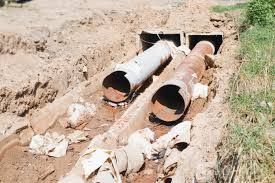
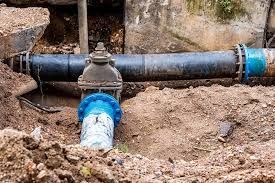

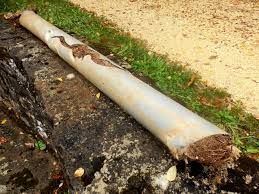

CONTACT INFORMATION
Office:
855-266-7682
Email:
service@AllCityPlumbers.com
Address: 6694 Oak Ridge Commerce Way, Austell, GA 30168
Business Hours:
Mon - Sun 24 Hours
OUR SERVICES
© 2022 All Rights Reserved|All City Plumbers Privacy Policy | Terms & Conditions | Sitemap

